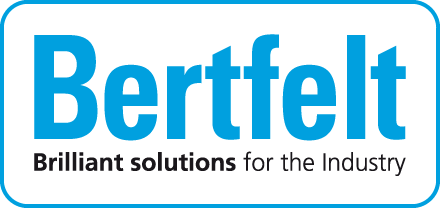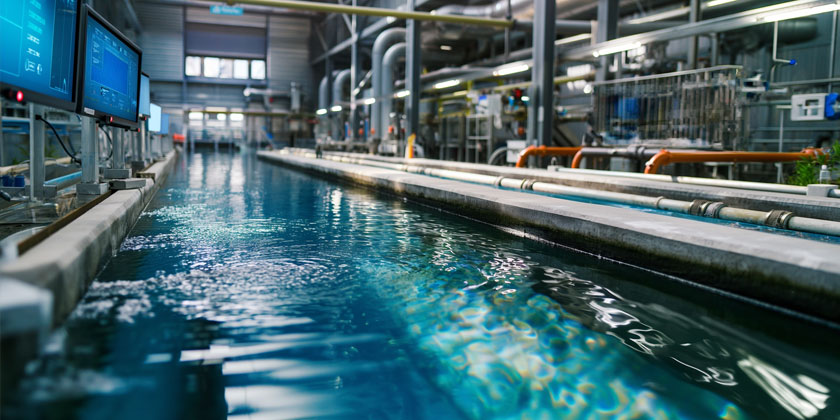Reducing the Water Footprint in Industry
Over the past 40 years, many industries have taken significant steps to reduce water consumption and improve the quality of their discharges. These efforts have helped limit environmental impact and promote more sustainable operations.
However, despite this progress, the water footprint of industrial activities remains substantial. With increasing global water scarcity and rising environmental expectations, there is still considerable potential to reduce industrial water usage further.
Addressing this challenge requires continued innovation in flow control, process efficiency, and water reuse—and BT-Maric Flow Control Valves are one part of the solution.
Saving Water in Industry
A Simple Methodology for Initial Analysis and Action Planning
Water conservation in industrial operations is a vital component of broader sustainability goals. This guide outlines a straightforward approach to help identify current water usage patterns and inspire actionable steps for reducing consumption.
1. Organisational Readiness
- Is there a designated person or team responsible for managing and optimizing water use?
- Do they have the resources, mandate, and competence needed to drive improvements?
2. Water Sources
- What types of water are used in the facility?
– Municipal water
– Groundwater
– Surface water
– Rainwater - Is water use from each source documented and monitored?
3. Water Consumption Monitoring
- Is total water consumption systematically recorded?
- Is there access to historical data to track trends and detect anomalies?
- Are costs related to water clearly known and broken down by usage area?
4. Water Use Mapping
Where is water used across the facility?
- Personnel areas (e.g., showers, toilets, kitchens)
- Production processes
- Machinery (e.g., cooling systems, mechanical seals)
- Utility systems (e.g., cleaning, steam generation)
5. Potential for Water Savings
- Are there areas where water could be saved:
– In the short term?
– In the long term?
- Have water-saving targets or KPIs been established?
6. Reuse and Recycling
- Is process water reused within the facility?
- Is rainwater collected for outdoor or non-potable use?
7. Benchmarking and Comparison
- Is water consumption benchmarked against:
– Industry peers?
– Similar production units within the company? - Are best practices from other sites being considered?
8. Operational Changes
- Are there any ongoing or upcoming operational changes (e.g., new processes, equipment upgrades) that could impact water usage?
This methodology is intended as a starting point for identifying efficiency gaps and opportunities, helping companies move toward more sustainable and cost-effective water management.
Climate Change – Aspects to Consider
Climate-related events such as droughts or excessive water flows can have significant operational and environmental impacts on industrial facilities. Evaluating climate risks is an essential part of long-term planning and water management.
Key Questions:
- Is the company affected by:
– Periods of drought or water scarcity?
– Heavy rainfall, flooding, or high water flows? - Has a formal risk analysis been carried out regarding the company’s exposure to:
– Local or regional climate change impacts?
– Water availability and long-term resource security?
– Potential disruptions to supply chains, production or infrastructure due to climate-related water events?
Water-Saving Equipment in Industry – Aspects to Consider
To reduce water consumption and improve efficiency, it is important to assess both the technological measures in place and their actual usage and impact. Below are key questions to consider:
Measurement and Monitoring
- Are water meters installed at major consumption points?
- Are the measurement results documented, monitored, and analyzed?
Flow Control
- Are constant flow valves used to limit and stabilize water flow, especially in processes where pressure may vary?
- Are water circuit breakers in use to automatically shut off water in the event of a leak or abnormal flow?
Process Efficiency
- In processes requiring rinsing, is countercurrent rinsing used to reduce water usage?
- Can water and chemicals be recycled within the process—for example in heating or cooling systems?
Fixtures and Facility Equipment
- Are water-saving fixtures such as low-flush toilets and water-efficient showers installed?
- Are timers, sensors, or other automatic shut-off devices used to minimize unnecessary water flow?
A Simple and Economical Way to Save Water in Industry
An effective way to reduce water consumption in industrial processes is to install BT-Maric Constant Flow Valves – a quick, cost-efficient, and maintenance-free solution.
Also known as flow restrictors or flow limiters, these valves are engineered to deliver a pre-set, constant flow rate, independent of pressure fluctuations. This ensures stable water usage, improved process control, and reduced waste, without the need for external power or complex regulation systems.
They are easy to install, require no maintenance, and help lower operating costs while supporting sustainability goals.
Learn more at the page Constant flow valves
Contact our experts!
Our team of experts is here to provide you with the knowledge and support you need. Whether you have questions about our products, need assistance choosing the right solutions, or want to discuss your unique requirements, our specialists are ready to help. With years of experience and a deep understanding of industry standards, we’re committed to offering you reliable guidance every step of the way. Don’t hesitate to get in touch – we look forward to assisting you!

